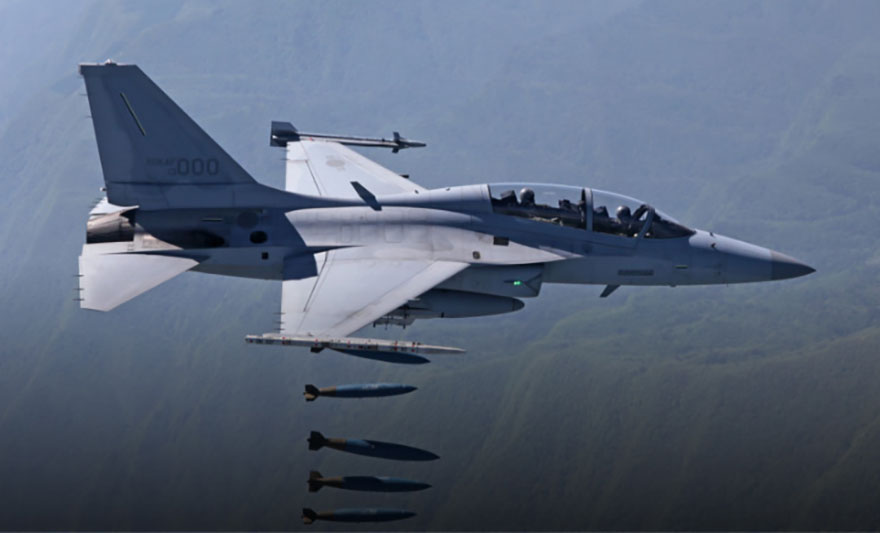PHL buys 12 aircraft worth P39.8B from Korea Aerospace Industries

SOUTH KOREAN defense company Korea Aerospace Industries on Wednesday said it had signed a deal worth 975.3 billion won (P39.8 billion) with the Philippine Defense department to supply 12 aircraft.
The company will export 12 of its FA-50 fighter jets by 2030, as part of the Southeast Asian nation’s push to modernize its military, it said in a statement.
Korea Aerospace signed a similar deal with Manila in 2014 and supplied another batch of 12 FA-50 jets in 2017.
South Korea, which has sold FA-50 fighter jets, corvettes, and frigates to the Philippines, aims to become the world’s fourth-largest arms exporter by 2027.
Also on Wednesday, the Philippine and US marines held drills in Batanes province in the country’s north as part of their Kamandag (poison) 9 annual exercise, the US Marines said in a statement.
Soldiers conducted “simulated marine strikes” on June 1, using the Navy-Marine Expeditionary Ship Interdiction System (NMESIS) in their drills, it said.
“The event was tied to a larger Maritime Key Terrain Security Operation, during which US Marines and Philippine Marines with Marine Battalion Landing Team 10 rehearsed securing and defending key maritime terrain in the advancement of a free and open Indo-Pacific,” it added.
The marines also rehearsed patrolling, seizing and defending strategic airfields, ports and access corridors against ground-based threats.
“US and Philippine Marines provided security, spreading their combined forces across the island’s key maritime terrain,” the US Marines said.
Philippine and US armed forces are holding the Kamandag exercise until June 6. This year’s exercise includes troops from Japan’s Self-Defense Force, South Korea’s Marine Corps and the UK Armed Forces.
During the Kamandag exercise, the Philippines and its foreign partners performed maritime security drills and special operation force exercises near Batanes islands in northern Luzon, facing Bashi Channel, which separates the Philippines and Taiwan.
The multinational joint military drills came after the annual Balikatan (shoulder-to-shoulder) exercise, a three-week war games where about 14,000 troops from the Philippines and US trained in areas near regional flashpoints such as the South China Sea and Taiwan. Troops used advanced US missile systems during the exercise.
Manila has been expanding its security ties with other western countries and regional allies at it seeks to counter Beijing’s sweeping claims in the South China Sea that overlap with the Southeast Asian nation’s exclusive economic zone.
China claims more than 80% of the disputed waterway based on a 1940s map, which a United Nations-backed arbitration court in The Hague voided in 2016 for being illegal.
Marine forces from both nations also initiated a dynamic maritime targeting process using the capabilities of maritime patrol and reconnaissance, and intelligence, surveillance and reconnaissance assets to find, fix and track targets.
“The supporting assets, which were coordinated by cross-functional fires and effects planning cell, formed critical nodes in the kill web required to execute complex maritime strikes on the modern battlefield,” it said.
The US Marines said that US-Philippine forces during the Kamandag exercise “showcased the increased ability of the partnered militaries to coordinate complex, all-domain operations and further demonstrated the ironclad US-Philippine alliance.” — Adrian H. Halili with Reuters



